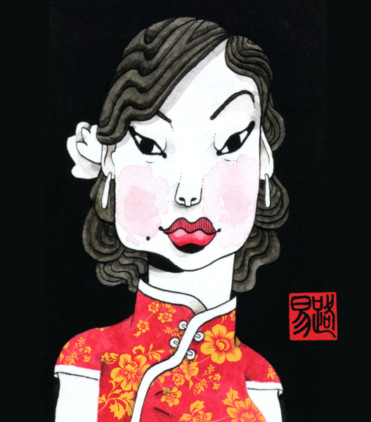
Amy Tan once told an interviewer that after the runaway success of her first novel, “The Joy Luck Club”, she made an effort to get away from the theme of Chinese-American mother-daughter relationships. On the evidence of her new novel, the attempt didn’t last.
The book has not just one problematic mother-daughter configuration, but three, each one marked by her other recurring themes: Chinese-American identity; the Chinese oppression of women; abandonment and the search for love. For fans of Tan’s early works, this may be a welcome reprise. For others, it might sometimes feel like a revisiting too far.
Amy Tan is an American writer of Chinese origin. The larger relationship between China and the US is an emotional one that seems to oscillate between mutual demonising and mutual romanticising, with an underside of reciprocal racial and cultural prejudice. If it is like that between two huge nations, Tan leaves us in no doubt that the effects at an individual level are no less complicated.
The heroine of “The Valley of Amazement”, Violet, is the daughter of an American madam and a painter. As a child in her mother’s upmarket Shanghai brothel in the early years of the 20th century, Violet assumes herself to be American, a status she considers superior to the courtesans and servants who surround her. It comes as a shock, therefore, to discover that her absent father is Chinese. When her mother later sails to the US in search of a lost son, she is tricked into leaving Violet behind. It comes as no surprise to find our heroine has in turn been sold into the life of a courtesan.
Tan’s favoured locations of California and Shanghai are revisited here. Shanghai itself is a hybrid city — a foreign enclave in China. There is a side trip two thirds of the way through the novel to a village 480 kilometres inland, an excursion into undiluted China, but it is more a nightmare to escape from than a location to remember.
The bulk of the narrative is divided between the west coast of the US and east coast of China, two geographies and two cultures between which the characters travel in search of themselves, and the missing parts of their own biographies.
Lucia, Violet’s mother, had set up her cross-cultural courtesan house after she was abandoned by her Chinese lover, whom she met in California and followed to China. Once in Shanghai she found, as she had been forewarned, that a pregnant American woman was not considered a possible bride for the eldest son of a traditional Chinese family.
True to Tan’s customary themes, Lucia and Violet’s relationship is fraught, though not as fraught as Lucia’s relationship with her own mother had been. Both Lucia and Violet rely heavily on the support of a Chinese female friend who interprets the local culture and teaches each in turn how to do business in it. In Violet’s case, the close companion is Magic Gourd, who was a courtesan in Lucia’s establishment until she was dismissed, in one of the novel’s minor quirks, because of her close relationship with a dead poet. Female friendships have room to thrive here, not least because of the high mortality rate among the men.
The reader learns about the life of a courtesan in Shanghai in the early 20th century, largely through a long monologue in which Magic Gourd lays out what awaits the 14-year-old Violet, and plans how the two of them can maximise the returns on what will, by its nature, be a short career. Tan has used the implausibly long monologue before, as a means of delivering necessary information or laying out a plotline. This one is not without interesting detail, though readers of Arthur Golden’s 1997 novel, “Memoirs of a Geisha”, which was set in Japan’s courtesan culture, will find some of it familiar. The disadvantage of this technique is that it does little to sustain the reader’s engagement with the character.
Indeed, the characters in this novel retain a certain detachment from each other, and from the reader. Many are in search of what one calls “pure self being”, without necessarily convincing the reader that the quest will be fruitful. Violet’s narrative tells us as much as we need to know about the conflict of identities she embodies, also played out in different forms through other characters. As a young courtesan, she assumes a Chinese identity and her early clients are Chinese; she marries an American, but is as unacceptable to his family as her mother had been to her Chinese lover’s family.
The novel’s title is taken from a series of paintings produced by Violet’s artist father and serves as the imagined place of fulfilment for both mother and daughter. Each has to learn that the image is an illusion and be reconciled to the difficulties of seeking, maintaining and losing love instead.
At times Tan skates perilously close to the thin emotional ice of a Mills & Boon, with the narrative of lost love and lost children, but she is too astute a writer to fall through entirely. She is a brisk storyteller, and despite its flaws, “The Valley of Amazement” packs in enough drama to keep her readers going to the end.
–Guardian News & Media Ltd


